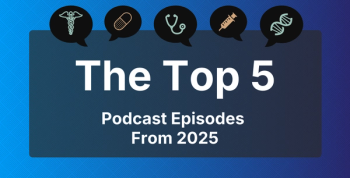
Stable Rates of DKA at T1D Diagnosis Seen in Germany
In Germany, rates of diabetic ketoacidosis (DKA) seen at time of type 1 diabetes (T1D) diagnosis were stable throughout the past 2 decades.
Between 2000 and 2019, frequency of diabetic ketoacidosis (DKA) at the time of
Findings are based on observations of more than 41,000 individuals under the age of 18 who presented with DKA at the time of T1D diagnosis in Germany.
Approximately 1 in every 500 children in Germany have T1D, and around 3000 additional children and adolescents under the age of 15 receive a diagnosis each year. “If the disease is not diagnosed at the time the first signs and symptoms of diabetes (polyuria, polydipsia, fatigue, weight loss) manifest, there is a risk that the young patient develops DKA,” authors explained.
DKA can lead to cerebral edema and can, in rare cases, cause death. “Mid- and long-term risks [of DKA] include an unfavorable course of the disease with a shortened period of remission and poor metabolic control as well as permanent intellectual and cognitive impairments,” the authors wrote. For these reasons, early diagnosis of T1D is crucial to prevent DKA development.
To better understand the proportion of children and adolescents presenting with DKA at the time of diagnosis, researchers analyzed data gleaned from the German-Austrian registry of diabetes (Diabetes-Patienten-Verlaufsdokumentation, or DPV). A total of 202 health care providers recorded data in the registry between 2000 and 2019, and information from 41,189 patients was included in analyses.
DKA was defined as pH values (venous/capillary) below 7.3 or bicarbonate levels less than 15mmol/L, and severe DKA was defined as pH values below 7.1.
Analyses revealed:
- Of the 41,189 patients with manifestation of T1D, 19.8% presented with DKA (n = 8154; slight increase [P < .001] over the study period) and 6.1% (n = 2513) had severe DKA.
- Children under 6 years of age had DKA more often than adolescents (12–17 years) (21.7% vs 18.6%; odds ratio [OR], 1.22; 95% CI, 1.14-1.30).
- Girls had a higher rate of DKA than boys (20.5% vs 19.2%; OR, 1.10; 95% CI, 1.03-1.14)
- Patients with a family history of migration (MiH; patient or at least 1 parent not born in Germany) were more likely to have DKA than those without MiH (21.4% vs 18.2%; OR, 1.40; 95% CI, 1.32-1.48)
- In a region with a pilot antibody screening project in place (Bavaria), the DKA rate stayed the same, at 20.6%, whereas in the control region the rate was 22.7% with a decreasing tendency.
- No association between distance from the hospital and the risk of developing DKA was found.
Overall, rates of DKA upon diagnosis in Germany were higher than those reported in
“This could be explained by the higher incidence and thus higher awareness of the disease in Scandinavia, but also by structured care as well as prevention and screening activities,” authors hypothesized.
The lack of decrease in incidence of DKA and the slight increase observed is not in line with what is expected of a modern health care system, they said. “The reasons for the lack of improvement remain unclear. It is of concern that an already achieved level of quality—that is a rather early diagnosis of diabetes in children and adolescents—cannot be further improved, and perhaps not even maintained,” authors wrote.
Based on the findings, researchers recommend physicians, pediatricians, caregivers, and teachers pay attention to children with MiH feeling unwell to make sure serious illnesses are not overlooked.
To increase earlier diagnoses of T1D, authors proposed several recommendations, including implementing awareness campaigns, identifying those at increased risk who have a family history of T1D or are at genetic risk, implementing population-based screening of autoantibodies, and paying special attention to early T1D signs in those at heightened risk.
“Conceivably, the manifestation of diabetes with DKA is not solely the consequence of a delayed response to initial symptoms, but, at least in some cases, indication of a special course of the disease with particularly rapid destruction of beta cells, as the higher incidence and often rapid development in young children suggests,” they wrote.
“In any case, knowledge of the initial signs and symptoms patients present with at manifestation of diabetes is essential in both the general population and the medical community at large as it may help to reduce the incidence of severe DKA in children and adolescents,” researchers concluded.
Reference
Segerer H, Wurm M, Grimsmann JM, et al. Diabetic ketoacidosis at manifestation of type 1 diabetes in childhood and adolescence. Dtsch Arztebl Int. Published online June 4, 2021. doi:10.3238/arztebl.m2021.0133
Newsletter
Stay ahead of policy, cost, and value—subscribe to AJMC for expert insights at the intersection of clinical care and health economics.








































